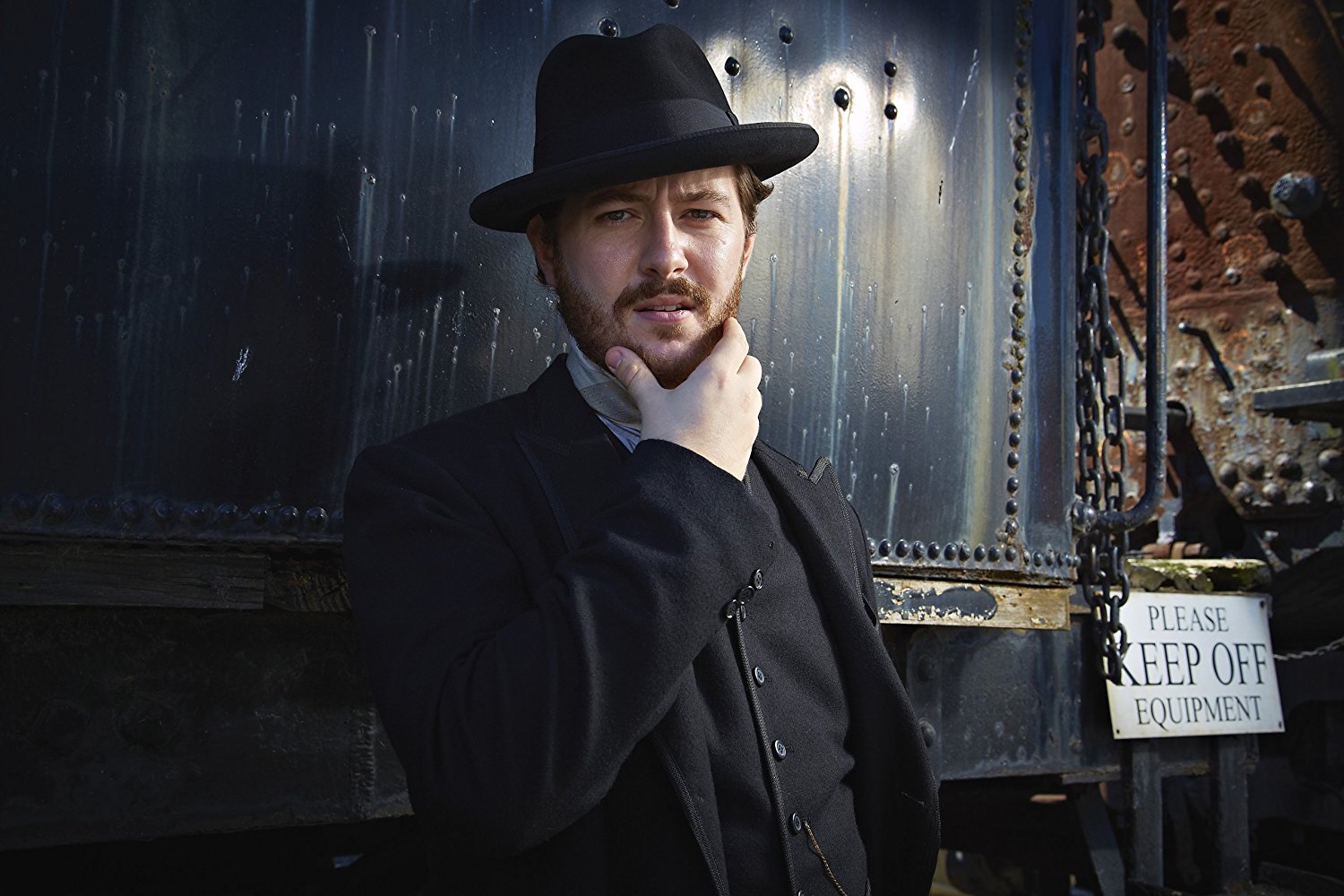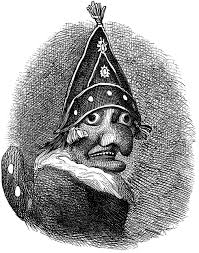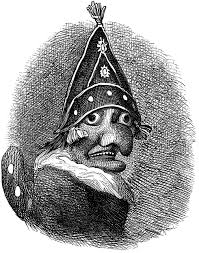
The Men Who Built America
He was the richest man in the world. Contributor BRENDA WENSIL chats with Adam Jonas Segaller about his portrayal of the legendary steel magnate, Andrew Carnegie, and discovers why big philanthropy should never replace social justice.

Adam Jonas Segaller via History Channel
Andrew Carnegie locked his gaze on the horizon. Stalwart, magnificent, this Man of Steel’s contemplative stare belied not only the struggle of an impoverished Scottish immigrant, but also his ascent in 1901 to becoming the ‘Richest Man in the World.’ Consolidating local steel mills and discovering how to reinforce the alloy into structural beams, Carnegie is single-handedly responsible for the rise of the modern skyscraper, ocean liner and railway, and by building a suspension bridge across the Mississippi River at St. Louis, effectively stitched together the economies of the east and west coast of America. Indeed, Carnegie Steel fetched the inconceivable purchase price of $480 Million ($13.6 Billion today) in the single largest corporate buyout in history, turning the 66 year old Carnegie into and upon his next innovation: American Philanthropy.
This climactic scene from the History Channel’s The Men Who Built America highlights the likely moment in which steel magnate Andrew Carnegie (played by Adam Jonas Segaller) beholds the greatest wealth ever known by one man, and while Carnegie’s wealth-giving sprees are legendary, this particular scene marks an irreversible point in history when charitable giving would become etched into the American psyche. Over 100 years later, a veritable industry of philanthropy compels every American to ask “How much” can we give and “Why” should we do so? I chatted with Segaller in New York City for clues about his research, insight and remarkable incantation of Andrew Carnegie.
Considering himself both an American and British actor, Segaller says “I prepared for the movie by studying Carnegie’s actions. Long before he was wealthy, for instance, Carnegie was making notes on how he could give back. He never forgot the library he was allowed, even encouraged to use as a young and deeply impoverished boy in Scotland. This kindness had a profound impact on his sense of humility and produced a desire to become a man of letters and culture.” Segaller continues. “It’s also possible that Carnegie was heavy with the burden of working his men to the bone, and on some occasions even to death, in the extraordinarily harsh conditions of 19th century steel mills. Stepping away from the industry provided a relatively convenient opportunity for him to work through and reconcile that irony. In fact, he built his first libraries for the workers at the mills.”
Charity is an old and curious phenomenon in human intercourse. The urge to give is in the marrow, and deeply mapped in society and the soul of our human family. But why? Is it purely altruistic or inert to our survival to gather and form communities? Or is it selfishly motivated to cleanse our guilt, or offset excess income with attractive tax breaks? Carnegie drew up the blueprint for distributing wealth, and though didn’t corner the market on human benevolence, nevertheless created the scaffolding and rigor for the industry. Indeed, by 1919 Carnegie had given away $380 million not only to cities, states, even nations around the world, but was spreading his beloved Arts and Letters into the darkest recesses of society. He funded universities, built 2,800 libraries, and established pensions for professors and the workers in his mills. He powered $25 million into peace efforts and constructed New York City’s Carnegie Hall where both rich and poor were welcome. And that was just the beginning.
Today, philanthropy is a multi-billion dollar enterprise with over 1.5 million nonprofit entities in the United States alone. In fact, not-for-profit organizations have outpaced private startups in recent years, and are underwritten by ultra-rich Americans who gave away $7.7 billion in 2013. High net worth individuals have become the modern-day philanthropists: shaping and building America in the spirit of Carnegie’s dream. Microsoft founder Bill Gates, for instance, established “The Bill and Melinda Gates Foundation” which is the largest private foundation in the world. With assets and income exceeding $53 billion, the Gate’s aim to enhance healthcare, reverse poverty, expand education and access to technology is changing the world. Warren Buffet donated $31 million to the Gates Foundation, and Ronald Perelman surpassed both Gates and Buffet by committing $70 million in charity in a single year. Indeed, all have challenged their wealthy peers to donate “half of all their assets” to philanthropic causes. And why not?
Paul Newman donated every single penny of after-tax profits from his “Newman’s Own Food Company” to charity to the tune of over $300 million. Phil Knight, co-founder of Nike, gave $725 million to the Oregon Health Sciences Center for medical research. Even Facebook’s Mark Zuckerberg gave $1 billion to the Silicon Valley Community Foundation. And the list goes on. Segaller says of the man he portrayed, “Andrew Carnegie was the first to state that the rich have a moral obligation to give back. To create a different and better kind of world.”
In “The Gospel of Wealth,” Carnegie’s seminal work on wealth and giving he states, “All personal wealth—beyond that required to supply the needs of family—should be regarded as a Trust Fund for the betterment of society.” Perhaps there’s a Carnegie in all of us: a desire to give away our excess to atone for the past? Or perhaps philanthropy is driven by the need to control the government’s hold on our earnings, and to build our own, unique chapels of democracy? To whichever reasons we turn, to all, to each, will come the call.
In one of the most memorable scenes from The Men Who Built America, Andrew Carnegie turns to JP Morgan after selling his beloved steel empire which revolutionized the modern world and says “What if I’d asked for more?” Unrequited, JP Morgan turns into the shadows of the 20th century. And as I’ve watched, and to some extent lived through, the banking collapse and economic recession in recent years, I realize that Carnegie’s greatest achievement immures from that very hypothetical question, and in the shadows where all other institutions have seemingly failed: to distribute wealth and opportunity more evenly between the classes. It is the War Call of our human family, and whether you’re a Scottish immigrant destined to change the world, a American-British actor daring to interpret it, or merely a banking veteran like myself charged with the exquisite opportunity to examine it I can assure you of this: “That no man can become rich—without first enriching others.”






